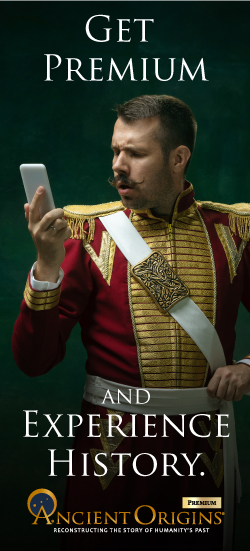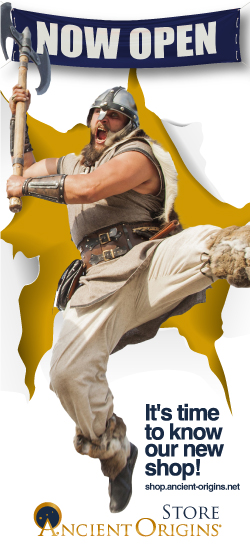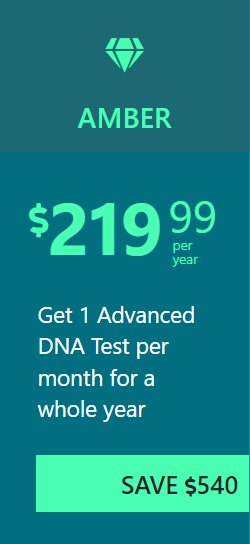The Ancient DNA Origins test
What is the Ancient DNA Origins test?
Ancient DNA Origins is the first and only genetic test designed from ancient DNA, ranging from the Paleolithic to the mid-19th century. Our tests are based on real ancient people, like Paleolithic Americans, Icelandic Vikings, or the legendary Tribes of the Biblical Israelites. Are you ready to find your Viking relatives?
How does the test work?
Over the past decade, there has been tremendous progress in our ability to extract ancient DNA from skeletons and mummies of people who lived thousands of years ago. What started with the DNA from one skeleton of an ancient Aboriginal became a rapidly growing database with thousands of samples from individuals who lived, breathed, and celebrated life as far back as 50,000 years ago and that's where we come in.
To connect you with your ancient ancestors each of our tests compares your DNA to the DNA of ancient individuals by analyzing a special group of genetic mutations in your DNA, called Ancient Ancestry Informative Markers (aAIMs). These mutations reflect the DNA of your ancestors as it looked thousands of years ago. By comparing these mutations in your DNA to the DNA of the ancient individuals, you get a snapshot of the genetic marks that your ancestors left on you that you still carry in every cell of your body. Finding relatedness with ancient people who lived hundreds and thousands of years ago can be very exciting, but in evaluating your results, remember that not all of your ancestors' genes were equally successful. Successful genes were those that withstood the challenges of time. The less successful genes have disappeared over time. Because of that, you may not be a 100% reflection of your ancestors.
What will I get from the test?
Each Ancient DNA Origins test provides you with a very detailed report, which includes extensive background on the culture that you selected, your genetic relationships with that culture overall, and your genetic similarity to each ancient individual. We also provide all the archeological information about them. The test also allows you to compare your results with those of present-day populations from all over the world who got tested, just like you! Are you ready to find out which Lost Israelite Tribe you belong to?
How much does it cost?
Each Ancient DNA Origins test comes in two levels, Beginner and Advanced. The Advanced test analyzes your DNA against 12 ancient gene pools and 15 or more ancient individuals. The Beginner test analyzes your DNA against 7 ancient gene pools and 5 ancient individuals.
Purchasing a subscription package will allow you to save money, access multiple tests, and receive other member benefits (see How Does it Work).
What is the Beginner DNA test?
The Beginner DNA test is a low-resolution DNA test, which calculates the proportion of 7 ancient gene pools in your genome. The test compares your results with 5 ancient individuals.
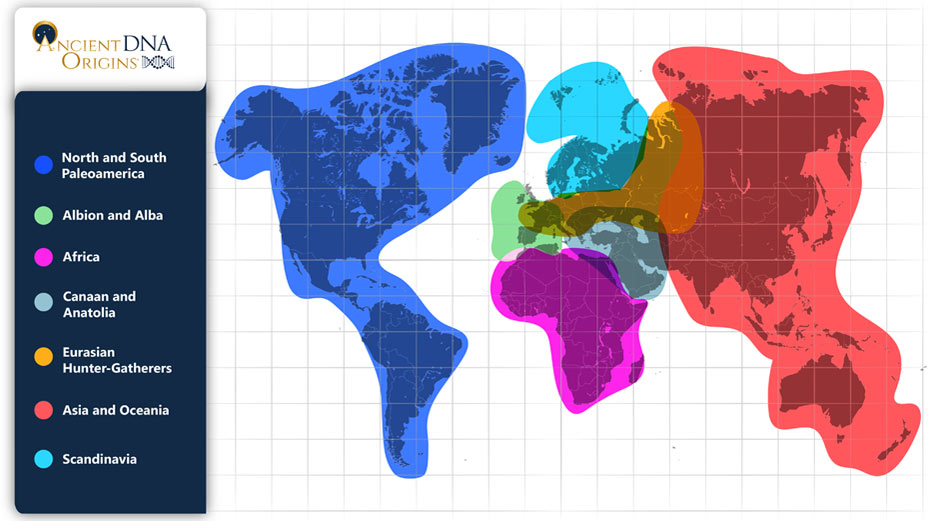
This test is inexpensive and suitable for anyone wishing to familiarize themselves with the technology before deciding on a more in-depth option. If you are interested in digging further in your genome and learning more about your ancient heritage, you can take the Advanced DNA test, which includes a higher-resolution breakdown of your ancient ancestry and compares you to many more individuals. At the moment, we do not offer an upgrade from the Basic to the Advanced DNA test.
What is the Advanced DNA test?
The Advanced DNA test is a high-resolution DNA test, which calculates the proportion of 12 ancient gene pools in your genome:
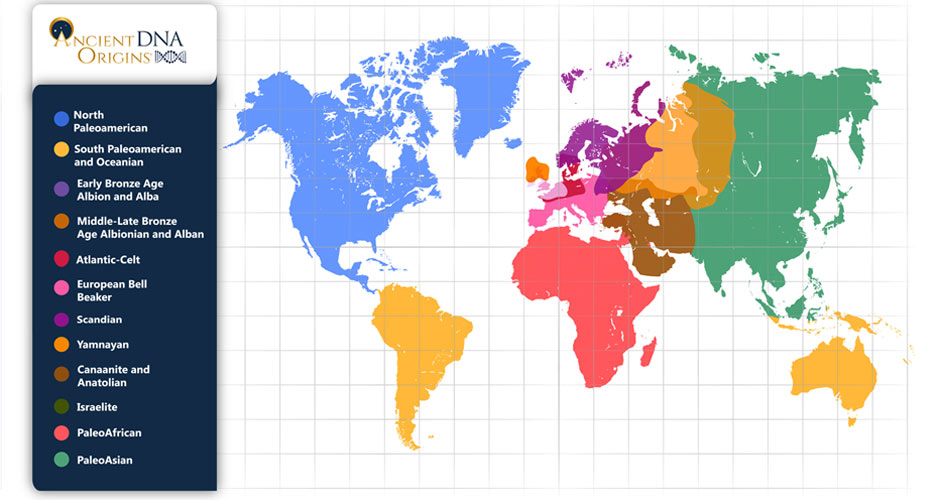
Most of the tests include 15 or more ancient individuals. This test is suitable for anyone wishing to explore their ancient ancestry in fine detail and uncover their ancient heritage.
How is the Ancient DNA Origins test different from other DNA tests?
Traditional DNA tests compare your DNA to that of modern populations—individuals such as yourself who reported their own ancestry as they know it and took the test. Your ancestry report will reflect your similarities to other users. The accuracy of such a test is therefore limited by other users’ understanding of their own history. If a user doesn’t know about his Native American heritage, for example, he won’t report it. If a user doesn’t know about an ancestor from Italy, she won’t report it. This leads to gaps in the test’s database and eventually to you receiving an incomplete picture of your heritage. In this way, the maxim that history is written by the winners also applies to genetics. Put another way, modern populations typically do not represent populations who lived in the same area in the past. Most modern populations are rather a mosaic of various people who traveled and passed through a location, mixing their genomes with others over time. This makes it impossible to link a modern Englishman with the Celts or modern Italian woman with the Romans without the ancient DNA.
The Ancient DNA Origins test aims to resolve this problem. Being based solely on ancient DNA from skeletons and mummies, it brings into life the DNA of long-gone people, like the Lost Ten Tribes of Israel, and allows you to jump into their world with minimal genetic speculations. The test captures the genetic diversity in the world as it existed in the Bronze or Viking Age and reports your DNA results as if you lived then and there.
What is a gene pool?
A gene pool is the collection of genetic mutations unique to a particular region and time. The composition of gene pools can change over time through natural forces like genetic drift, where DNA changes at random, or through migration, for example, when a large population from a different gene pool migrates into the area and mixes its DNA with the DNA of the local community. As a result, the regional gene pool changes, and future populations would be genetically distinct from ancient ones. Populations exhibit a mixture of gene pools, depending upon their demographic history. Homogeneous populations will show fewer gene pools than heterogeneous ones. The ancient gene pools formed as soon as human populations splintered and spread around the world some 200,000 years ago and continued to be modified afterward. So far, 12 human gene pools around the world have been identified, and ongoing research aims to identify more. Very few of these ancient gene pools survived to the modern era, but using ancient people from these prehistoric times and machine learning algorithms, Ancient DNA Origins identified the genetic markers of these archaic gene pools and tested which of them survived in your DNA as if you lived hundreds or thousands of years ago. Your personalized report shows the percentages of DNA that you inherited from these ancient gene pools and the history of each one.
What is a culture?
A culture consists of well-characterized historical people whose skeletons were found in archeological sites. The individuals were characterized, described, and dated by archeologists and geneticists. Their cultural group was determined based on that categorization and the materials left alongside the skeletons. In some rare cases, there is comprehensive literary evidence of the culture, such as in the case of Canaanites and Assyrians, wherein in other cases, the evidence includes only pottery, animal bones, and other materials that survived. We strived to include individuals from well-known cultures of which we have some historical and archeological knowledge in our tests. The ancient DNA of individuals from these cultures was extracted from their bones and sequenced. The DNA sequence was used to determine their ancient gene pool membership.
What technology is used to compare my DNA with ancient DNA?
The Ancient DNA Origins test is based on the ancient genomes published by the leading paleogenomics labs in the world (https://science.sciencemag.org/content/365/6457/981). Dr. Eran Elhaik has been developing comparative direct-to-consumer genetic tests since 2010. He first designed the GenoChip microarray for Genographic Project (Geno 2.0) and their online tests (http://gbe.oxfordjournals.org/content/5/5/1021). Next, he designed the DREAM and mini-DREAM microarrays for HomeDNA (https://academic.oup.com/gbe/article/9/12/3225/4642844) and GPS Origins, the most accurate biogeographical test. In 2018, Dr. Elhaik identified the first Ancient Ancestry Informative Markers and developed the technology to compare ancient DNA samples (https://www.ncbi.nlm.nih.gov/pubmed/30545160). In 2020, Dr. Elhaik launched My Bronze Age Origins Test, which compared people with Bronze Age cultures. In 2022, Dr. Elhaik and Ancient Origins launched Ancient DNA Origins based on the unique machine-learning technology that they developed, which allows identifying mutations in the ancient DNA data and using them to calcualte the relationships between ancient and present people. To learn more about Dr. Elhaik’s work, visit his website.
Will you show my matches with modern-day populations?
No. Your DNA will only be compared to the DNA of ancient people.
You can compare your matches with ancient people with the matches of modern-day populations to those ancient people.
Why choose Ancient DNA Origins?
| Category | Analysis |  |
Family TreeDNATM 1 | 23andmeTM 2 | AncestryDNATM 3 | Living DNATM 4 | My HeritageTM 5 | My Bronze AgeTM 6 Origins Test |
|---|---|---|---|---|---|---|---|---|
| Raw Data | Upload | - | - | |||||
| Download | ||||||||
| Biogeography | Discover your ancestral migration routes | Only GPS Origins | - | - | - | - | - | - |
| Pinpoint your geographical origins | Only GPS Origins | - | - | - | - | - | - | |
| Recent ancestry | Ancestry estimate is based on modern people | - | ||||||
| Ancient ancestry | Ancestry estimate is based on ancient people | - | - | - | - | 6; 10 | ||
| Number of Ancient worldwide regions | 7; 12 | 3 in Europe | - | - | - | - | ||
| Analyses | Compare your results with ancient populations | - | - | |||||
| Compare your results with ancient individuals | - | - | ||||||
| Compare genetic distances between ancient individuals | ||||||||
| Compare your results with modern populations |
|
- | - | - | - | - | - | |
| The Report | Report similarity to ancient people and cultures | - | - | - | - | - | Only ancient cultures | |
| Detailed stories on the culture | Short summary | - | - | - | - | Short summary | ||
| Informative stories on ancient people | - | - | - | - | - | - | ||
| The report covers historical events | - | - | - | - | - | |||
| Periods covered in the tests | 12,000 BC - present | 6600-3300 BC | Present | Present | Present | Present | 3600 BC-0 | |
| Historical figures in the test | - | - | - | - | - | - | ||
| Database size | Database size of ancient people | 500+ people | 8 people | 0 | 0 | 0 | 0 | 500+ people |
| Novelty | Discover the Ten Lost Tribes of Israel | - | - | - | - | - | - | |
| About the test | Beginner and Advanced versions | - | - | - | - | - | ||
| Single test/subscription option | - | - | - | - | - | - | ||
| 100% DNA Privacy Guarantee | ? | ? | ? | ? | ? | ? | ||
| Retail Price | Starting with $39.99/test or $9.99/test with a subscription | $59 | $99 | $59 plus $24.99-49.99/month subscription | $79 | $79 | $30 Basic, $48 Advanced |
1. FamilyTreeDNA TM:https://learn.familytreedna.com/user-guide/family-finder-pages/ancientorigins-family-finder-pages/ancient-origins/, https://learn.familytreedna.com/user-guide/family-finder-myftdna/walkthrough/
2. 23andme TM:https://www.23andme.com/en-eu/, https://medical.23andme.com/wp-content/uploads/2015/10/AncestryComposition.pdf
3. AncestryDNA TM:https://support.ancestry.com/s/article/AncestryDNA-Resources, https://blogs.ancestry.com/techroots/unraveling-the-science-behind-ethnicity-estimation/?o_iid=62776&o_lid=62776&o_sch=Web+Property
4. LivingDNA TM:https://livingdna.com/eu/kit/ancestry-dna-test, https://support.livingdna.com/hc/en-us/articles/360012762551-How-do-I-interpret-my-recent-ancestry-results-5
Taking the test
Why take an ancient DNA test?
Ancient DNA dispelled many of the assumptions about human origins and migrations popularized in the first generation of autosomal testing. Every ancient DNA study surprises us by the ways in which it rewrites human history. Ancient DNA studies already exposed bygone cultures like the Yamnaya and Bell Beakers alongside more well-known cultures like the ancient Israelites, the Vikings, Paleo-Americans, or Jomon, who took center stage in many well-known sagas. This could not be done without ancient DNA. Whereas standard DNA tests are based on modern-day populations, they are limited in the amount of information they hold about the past. To learn about your connections with ancient cultures, an ancient DNA test is needed. Alongside the genetic results, ancient DNA tests hold a wealth of archeological and historical material that will teach you about the struggle and achievements of past cultures that are part of your history.
How will Ancient DNA Origins test help me study my family history?
Taking our tests will unearth your most ancient genetic origin, which goes beyond the written records of your family history and may even predate the first written word. The test will uncover your primeval tribes and cultures and open up new avenues of research for the footsteps of your most ancient ancestors at time scales that are impossible by traditional genealogy tools. Whereas genealogy methods cannot go beyond 500 years (at best), our tests can take you further. Our tests are not biased by ancestry, only by the rate of ancient DNA discoveries, which improve every year. Thereby, whether your ancestors kept good genealogy records or not, will not affect your results, which will uncover your ancestral tribes, the core origins of your family. This will give you a chance to learn about your culture from prehistoric times. With our test, you can not only identify your ancient culture but also test your relationship with particular ancient individuals of that culture. You will learn where they were found, where they come from, and how they lived. All this wealth of information will allow you to expand your genealogy research deep into the past.
I took a DNA comparison test with another company. Can I use that data for the Ancient DNA Origins test?
Yes, you can download your autosomal DNA file from your ancestry companies. You can then upload your file to our website and we will analyze it. You will receive an email notification when your results are available. Then you can view, copy, print, and share them.
How can I get my DNA results from the ancestry testing company I initially used?
All the companies should offer you the option to download YOUR DNA. If you do not know how to do that, check out their FAQ or email their support. Download your results from the initial sequencing company and upload them to your account here (see Upload a DNA file) . Email the company if you cannot find your file.
I have taken two or more tests with other companies. Can I upload several files?
Yes, you can upload one or more files and order tests for each file. Note that each test that you order is for one file. For example, if you want to see which of your DNA is more Viking, your ancestry.com or 23andme file, you should upload both files and order the test for each one. Note also that the results may change between these files because the DNA that you receive from each company may be slightly different. We cannot say which result is more accurate because we did not produce the files. We can only be confident that our DNA test kit is accurate.
I have the DNA of my late family members can I upload them?
Yes, if you have the legal right to their DNA, you can upload multiple files. See above for more details.
I never took a DNA test. Can you help me?
Yes, you can order our DNA sampling kit. It comes with a flint arrowhead and a voucher to get one free test to compare your sample to that of an ancient culture.
I did not get my DNA kit. Can you help me?
When you ordered a DNA kit you received an email with a code. You were asked to open an account with HomeDNA and order the kit from them using this code, which will make the balance $0. The reason that you are asked to do that is that HomeDNA provides those kits and the GPS Origins results, which you can only view from their website. If you did not receive your DNA kit, please find our email and put the order on their site. If you did not receive your kit after you ordered it from their site, contact us
How do you reconstruct ancient people?
The field of Ancient DNA is all about reconstructing the past, whether it is reconstructing the faces of ancient people from their skeletons, reconstructing their genetic diseases, or reconstructing their ancient DNA from many small fragments. In our case, ancient individuals are reconstructed from their ancient DNA or the ancient DNA of other people (e.g., family or tribe relatives) in combination with the archeological and historical data.
Why did you choose these ancient cultures?
Most of the ancient people who inhabited our world were not studied and are not even known by name. We are still learning about them as we go. From the DNA of over 6000 ancient people, we can tell that cultures were mixed and remixed. Some passed on their genetic legacy, but many went extinct. Some regions of the world, particularly the hottest ones, like Africa, are under-represented in the test because they are also under-represented in the literature. Ancient DNA is preserved much better in cold weather. Heat and humidity break down the DNA over time until it cannot be reassembled. Nonetheless, our tests include cultures from all over the world and all the continents (except for Antarctica). Every pioneering phase of knowledge starts small and builds to more and more certainty, comprehensiveness, and precision.
How do I receive my results?
Your results appear on different tabs online in your secure account. Log in to your account after being notified that your results are ready and choose your file.
Will I be able to download my DNA information?
Yes, you can download your DNA raw data file by logging in, clicking My Account, and selecting My DNA Files. When your DNA file is ready, you will see a link under "File Name" that will download your data. Click on that file to download your data.
How are lab results formatted?
Commercial companies typically sequence only a small part of one’s DNA. The final file contains between 80,000 to less than one million single nucleotide positions (SNPs) mapped across all your chromosomes. If you took a DNA test, your data file could be downloaded from the website of the company that provided the service. The results are labeled A, G, C, or T, the names of chemicals found in sequences and strands that intertwine through your genome. This personal database reflects your entire ancestry. It can then be compared with the DNA of ancient people from extinct cultures to gauge genetic similarity.
What are the advantages of autosomal DNA over other types of testing?
If we go back 15 generations, each person alive today has 32,768 ancestors. Only two of them contributed the mitochondrial and Y chromosome lines, which your parents gave you—the focus of DNA testing companies’ earliest haplotype assignments (H, R1b, L2, etc.). Y chromosomes and mitochondrial DNA reflect information only from the entire male or entirely female lines. Autosomal genomes, on the other hand, carry recombining segments inherited from tens of thousands of others. Even though the two haplotype lineages are important—and may indeed be typical of all the other populations you incorporate from the past—they are by no means the whole story.
Do you share or sell my private DNA information?
Our customers trust us with their sensitive genetic information—and we take that trust seriously. DNA results and personally identifiable information are kept confidential and are not sold to, leased, or shared with a third party (except in connection with a merger/sale of our company) unless we are required by law to comply with a valid court order, subpoena, or search warrant for genetic or personal information. We may use aggregated anonymous data (that cannot be traced back to a specific individual) for research and marketing purposes and to improve our services. Respecting our customers’ privacy is at the heart of our work.
The technology behind the test
What is ancient DNA (aDNA)?
Ancient DNA comes from early human fossils and ancient remains around the world. It is recovered from human graves, cemeteries, and skeletal remains from the past, often dating from hundreds to thousands of years ago. It is distinguished from archaic DNA--DNA from non-human ancestors such as Neanderthals and Denisovans and modern DNA from living humans and contemporary populations. Archeologists work with geneticists to publish aDNA findings in scientific journals. The first ancient genomes were published in 2010.
How is ancient DNA reconstructed?
Advanced molecular biology laboratories extract and sequence genomic data from preserved specimens. Recent modifications of the process have eliminated contamination, increased the success of efforts, and lowered the cost by a factor of 10,000. This great leap forward is called the “ancient DNA revolution.”
How fast is the field of ancient DNA moving?
By November 2022, some 6,500 genomes from ancient peoples had been published. With breakthroughs in technology reducing the costs of extraction and sequencing, and with automation creating a factory-like setting, ancient genome sequencing is now a routine process and new ancient DNA labs are established every year. The pace of discovery is only expected to accelerate.
How does autosomal testing enable comparisons with ancient DNA?
As we go back deeper in time, a person’s genomic DNA gets chopped up each generation and scattered into more and more bits of fragments attributable to ever-larger numbers of ancestors. Much of this information has likely been lost over time. The purpose of ancient DNA testing is to revive those ancient genomes and their unique mutations. To a greater or lesser degree, we inherit DNA from nearly everyone in our ancestral populations; it is just a question of measuring the amount derived from each ancestral population once ancient DNA from these populations became available. This could only be done with autosomal tests, because the mitochondrial and male Y chromosomes that we did not inherit from our ancestors are gone forever.
What is the technology that allows us to look at the genome?
Commercial DTC companies test only a fraction of your DNA. Your DNA is extracted from your saliva. A microchip array (“SNP chip”) identifies your variation and differences (mutations) in terms of single nucleotides, sequences, strands of DNA, or, loosely speaking, genes in specific sites in the DNA. The file that you receive from these companies shows that list of sites (markers) and your corresponding mutations. These data are then compared to the ancient genomes that were sequenced on a similar microchip or using a complete-genome approach that attempts to recover their entire DNA (not just 0.5-1 million bases).
What parts of the world have produced ancient DNA?
The first ancient human remains studied in this way came from Siberia and other northern regions, such as Greenland. Because warm climates increase chemical reactions, DNA from places such as Africa is more decayed and harder to tease out. Many ancient lands and cultures have remained beyond our reach. For instance, scientists have not yet recovered aDNA from before fourteen thousand years ago from southeastern Europe and the Near East. Recovering DNA from the Bronze Age, by comparison, is considered more doable. Since most paleogeneticists are Europeans or Americans of European ancestry, there is a bias in the archeological sites that have been placed on the record. Nonetheless, there is hope for broader coverage as extraction technologies develop with time. The recent years saw incredible additions to the data coming from the Levant, the Americas, and Africa. Indeed, this test includes multiple cultures from these regions.
What data are obtained from ancient DNA?
Although it is still possible to recover mitochondrial, Y chromosome, and X chromosome readings from aDNA as in the early days, the overweening goal now is the prize of the whole genome—the full set of genetic code each of us inherits from our parents. Just as the first companies promised customers their “haplotype” (history of their mother’s direct female lineage or father’s direct male lineage), since 2006, the emphasis both in science and its applications, including genetic counseling and consumer testing, has been on autosomal DNA.
What is included in the Ancient DNA Origins Swabbing kit?
The Ancient DNA Origins Swabbing Kit includes an arrowhead, a booklet, a swab and collection vial, a biohazard bag, and a return envelope.
Understanding the results
What does the section Ancient DNA Origins mean?
In this section, we provide the most updated information about the culture that you chose. This is not an encyclopedic view. This information links what is known about the culture from historical and archeological records with what we know from their DNA. Most importantly, all these stories involve your ancestors who are included in the test and who lived these stories! This is how you become a part of their story and why their story is now your story.
What does the section Ancient People mean?
Ancient DNA Origins test does not analyze only your ancestry; it also tests the ancestry of the ancient people who are included in the culture that you selected. The test brings you all the knowledge that we have about these people, their whereabouts, their parental haplogroups, their ancient gene pool breakdown, and their relationships with other ancient people.
What does the section My Results mean?
This section includes several results.
Your ancient ancestry or ancient gene pool breakdown. The ancient gene pool gives you a sense of what the ancient ancestry that survived in your DNA looks like. In other words, if you lived in the past, this is where your ancestry would be drawn from. These gene pools may be highly mixed or not; it all depends on your ancestors.
Your genetic similarity to your ancient culture. Here you can see your genetic similarity to each one of your ancestors from your ancient culture. This information is obtained by comparing your DNA with their ancient DNA. If you are a living Viking or Israelite, you should expect your results to be over 70% or 80%. It depends on how similar people within this culture are to each other. The test summarizes your genetic similarity to your ancestral culture.
What does the section Population Wide Results mean?
Since ancestry research is a never-ending endeavor, Ancient DNA Origins allow you to continue researching your ancient ancestry by studying how other modern-day people are related to your ancestral culture. First, you will see the genetic legacy of your ancestral culture using a heat map. If your ancestors left much genetic heritage, expect to see a red color and green if otherwise. Next, you can compare your genetic legacy with those of other people.
How were the genes of the ancient people passed on to me?
Each test captures a unique culture that lived during a certain time period in history. Every culture peaked and then disappeared, which does not mean that the people vanished. It usually means that the people of that culture may have mixed with other cultures and lost their unique identity. Some of them passed on their genes and some of them did not. You are the outcome of the “winning cultures” – those that have passed on their genetic material forward, but you do not necessarily know the full story of the cultures that predated the “winning cultures” and passed on their genetic materials to them. Each test allows you to see what all the cultures look like before they disappeared or were replaced with more advanced cultures. You may therefore see some surprising results and partial matches with cultures some of who you identify with and some will be new. Read each of the cultural descriptions to interpret the unique outcome of your test.
If someone with Native American ancestry took the test, what would they find?
People of Native American background may find their ancient gene pool composition, prior to the arrival of Europeans to America. They may also identify their ancestral tribes and reconnect with their individual ancestors through their shared genetic information and culture. The same is true for people with a more mixed native American background.
Do people belong to races?
No. Modern people represent an assembly of several mixing and re-mixing events of the past and of bygone cultures.
Why do my ancient ancestry results differ from my ancestry breakdown provided by other companies?
DTC companies calculate your ancestry breakdown based on the DNA of modern-day populations; it tells you a lot about the present, a little about the recent past, and almost nothing about the far past. The Ancient DNA Origins test analyzes your ancient DNA as if you lived hundreds or thousands of years ago. This is not an exact comparison because, after all, you are not really a Bronze Age person. During the thousands of years that separate you from the Bronze Age cultures, some regions saw the influx of migrants, war, the disappearance of some of the gene pools included in the test. Therefore, the test yields an approximation of your ancient ancestry. Since those ancient gene pools have changed over time, they may not correspond to gene pools inferred from modern populations. Nonetheless, this is the most accurate test to infer an ancient ancestry.
I got an error message when I uploaded my DNA file.
Our system accepts only autosomal files (not paternal or matenral). Such files, typically start with a few lines that start with # and then they will have a row with this or a similar header: "rsid chromosome position genotype", followed by rows of genetic data (40,000-1M rows)
We make substantial efforts to be green and thereby provide all the results electronically.
There may be a problem with Safari browsers on Mac and iPad. If this happens, please try a different browser. If the problem continues disable your ad blockers. If it still doen't work try it from incognito mode and on your cell phone. If all fails, contact our support
At the moment, our kit is only available for US residents.
Our coupons typically apply to tests and subscriptions, not to the kit.
Click on the button "Member Area" in the top of the screen. Choose the test that you want to get. In the test screen, select the profile for which you purchased the membership. If you do not select the profile for which the membership was purchased, you cannot get the next test under the membership. Select the test type that matches your membership (basic\advanced). Add the test to your cart. Click on the cart. You will see a $0 balance. Finalize the order.
Try changing your password from a private\incognito window, this way. In Windows, if you right-click the browser icon, you will see private\incognito mode. Use this to connect to our website and change your password.
Select the test that you would like to order from the Products page. Select a profile from the drop list. Each profile corresponds to each file that you uploaded. Next, select if you want the "basic" (low resolution) or "advanced" (high resolution) versions of the test. Next, click "Add to cart." Click on the cart icon (top left) and you will see the shopping cart. You can order as many tests as you want. If you have a coupon, click "I have a coupon," otherwise click "Check out". Complete the billing information and click "Continue to review." Click on "Complete checkout" to finalize your purchase. The results will be available shortly on your My Results page.
Click here, if you want to be the first to hear when new tests are ready.Can I get my results in hard copy?
I cannot see my results.
I live outside of the US and I cannot order a test kit.
I got a coupon but it does not reduce the cost of the test kit.
I purchased a subscription, how can I get FREE tests with that subscription?
I am unable to change my password, it keeps telling me I have a wrong password
Can you explain step by step how to order a test?
Learning more
I am interested in learning more. Can you provide me with more details on my results?
